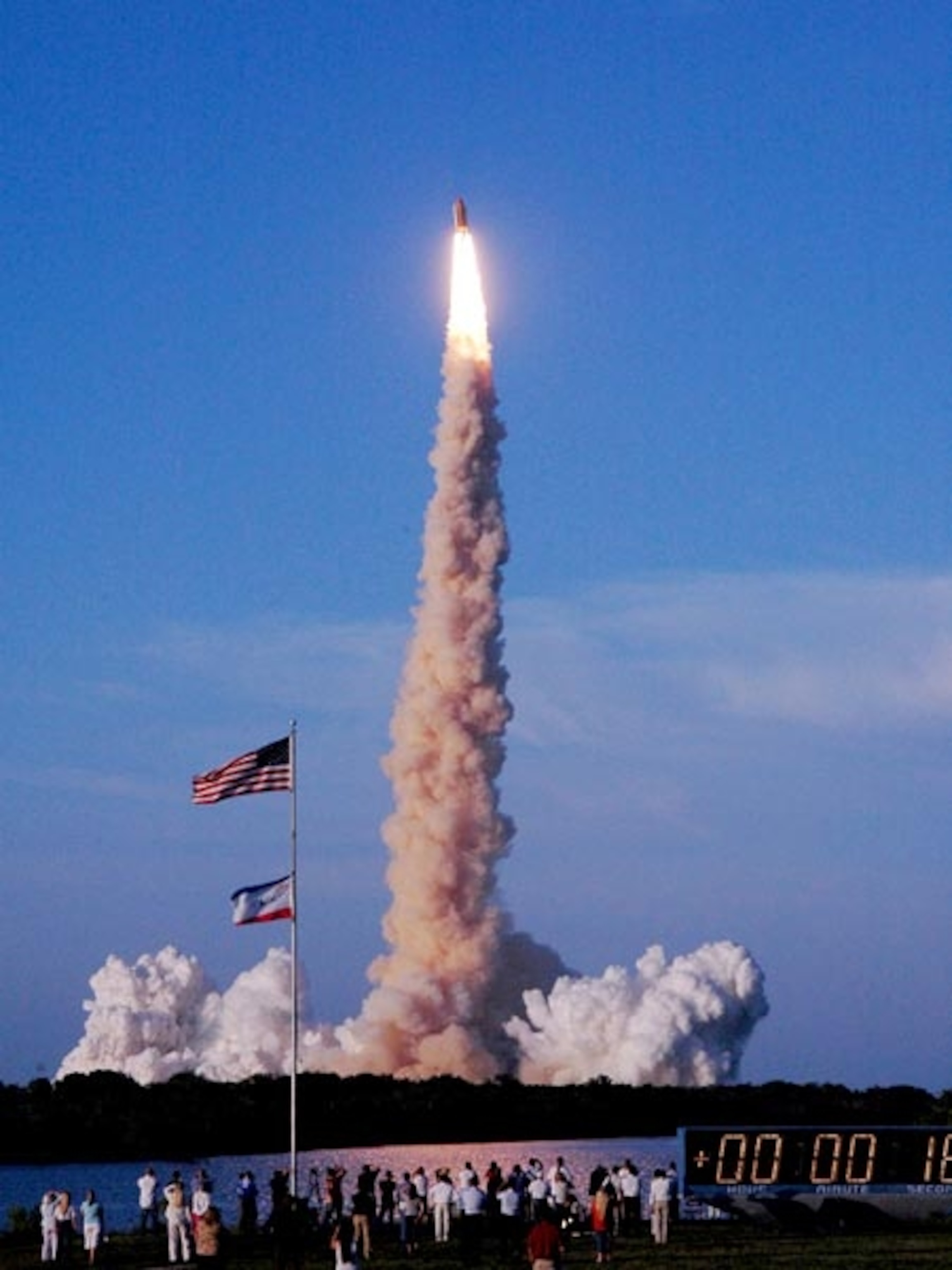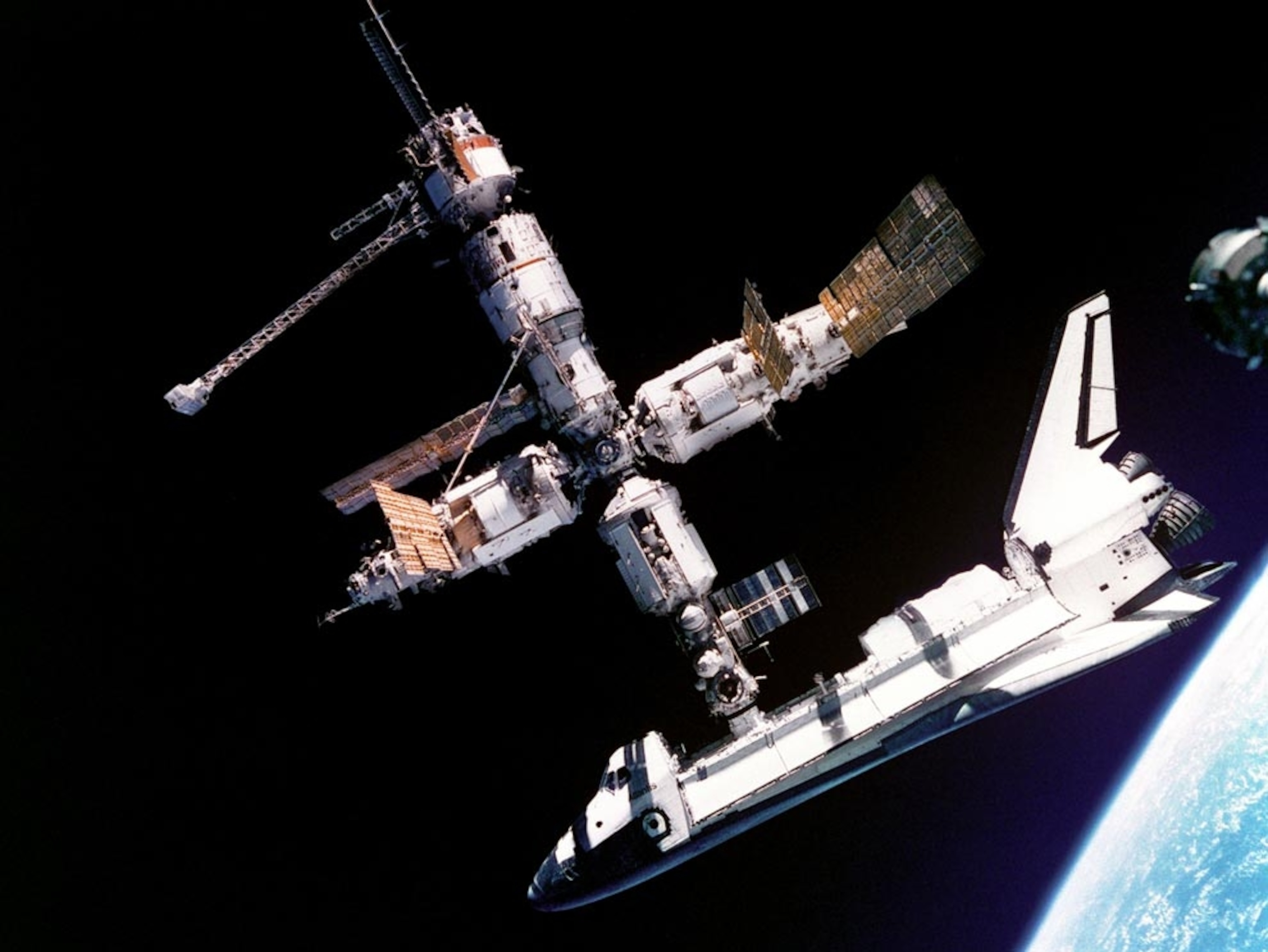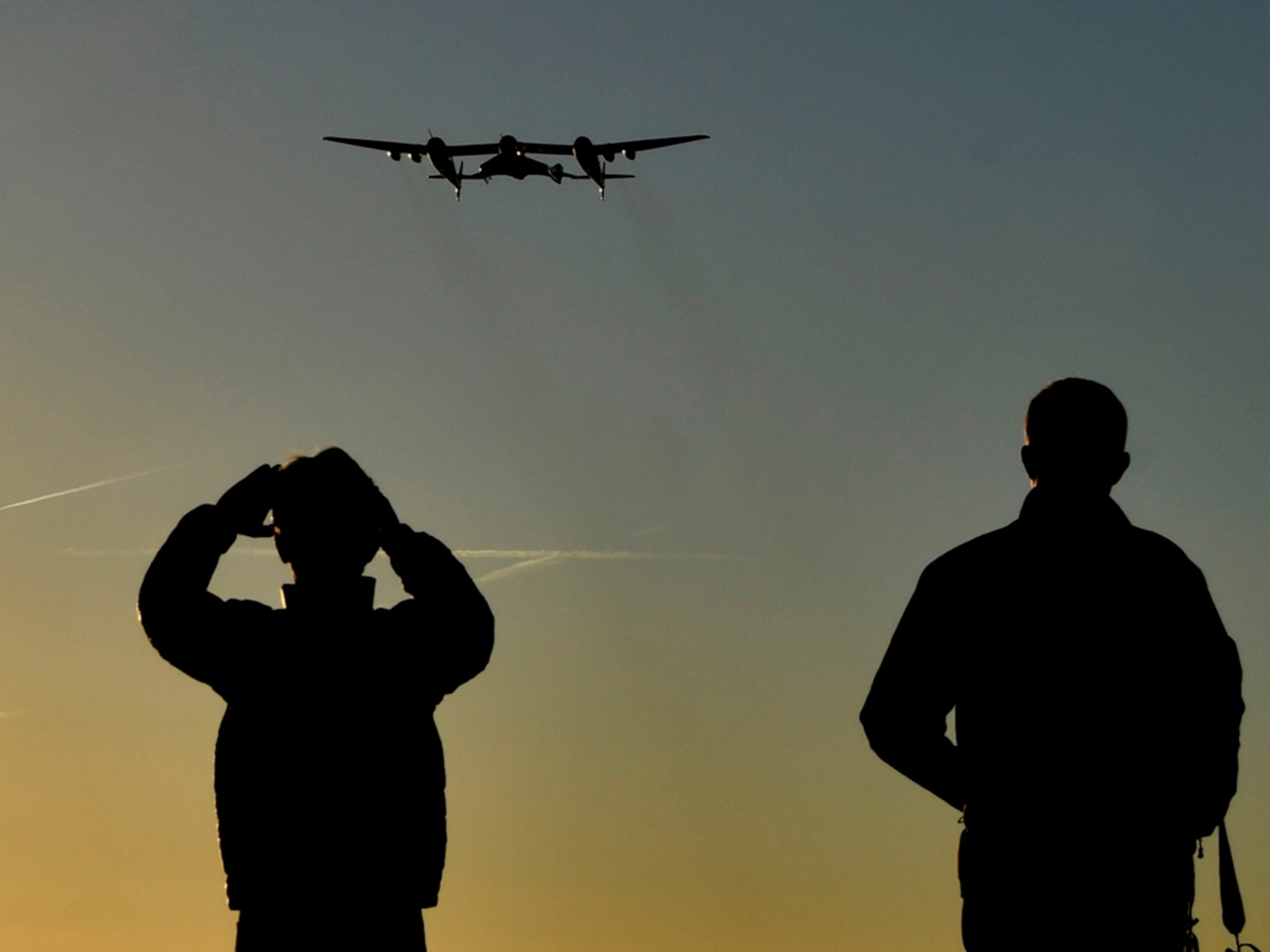NASA's space shuttle was unlike any other spacecraft built during the 30 years the program was in operation. Unlike the much smaller capsules of the Apollo era, which launched on the tips of rockets and splashed back into the ocean, the jetliner-size shuttle was designed to streak into space using powerful boosters and return to solid ground as a glider. The craft’s aerodynamic winged shape allowed it to descend through the atmosphere and touch down on a runway, much like a commercial airplane.
While in orbit, the space shuttle circled the planet at some 17,500 miles (28,000 kilometers) an hour, which means that the crew could see a sunrise or sunset every 45 minutes.
NASA's space shuttle was unlike any other spacecraft built during the 30 years the program was in operation.
Unlike the much smaller capsules of the Apollo era, which launched on the tips of rockets and splashed back into the ocean, the jetliner-size shuttle was designed to streak into space using powerful boosters and return to solid ground as a glider. The craft's aerodynamic winged shape allowed it to descend through the atmosphere and touch down on a runway, much like a commercial airplane.
While in orbit, the space shuttle circled the planet at some 17,500 miles (28,000 kilometers) an hour, which means that the crew could see a sunrise or sunset every 45 minutes.
After liftoff from Florida's John F. Kennedy Space Center, a typical space shuttle mission lasted ten days to two weeks and included a full schedule of scientific experiments and technological maintenance. Astronauts performed a variety of tasks aloft, including satellite repair and construction of the International Space Station. Each of the shuttles was specially equipped for such functions, most notably with a large cargo bay and a robotic manipulator arm.
Program Liftoff
On April 12, 1981, John Young and Robert Crippen launched the space shuttle program by piloting Columbia to space and returning successfully two days later.
In 1983 space shuttle astronaut Sally Ride became the first U.S. woman in space as part of the Challenger crew.
The program was a tremendous success for NASA, but it also endured several tragedies. A string of successful missions was broken in 1986 when Challenger disintegrated seconds after liftoff, killing its seven-person crew.
The space shuttle program was suspended in the wake of the accident, and no shuttles were launched for nearly three years. The program rebounded in April 1990 with the successful mission of Discovery.
Astronauts on this momentous flight placed the Hubble Space Telescope into orbit. This incredible imaging device has subsequently added much to our understanding of the cosmos while returning otherworldly images that bring the universe to life.
In 1995 the space shuttle Atlantis successfully docked at the Russian space station Mir, bringing the two great space programs closer together in an era of cooperation that stood in marked contrast to the early days of the space race.
Tragedy struck again in February 2003 when the program lost its second shuttle: Columbia disintegrated over Texas just 16 minutes before its scheduled landing, and all seven crew members were lost.
Despite this heartbreaking setback, the space shuttle was flying regularly again by 2006. In February 2008 Atlantis delivered the European Space Agency's Columbus laboratory to the ISS. And in February 2010 Endeavour brought up the Cupola, a robotic control station with seven windows that provides the ISS crew with a 360-degree view.
End of an Era
In 2004, U.S. President George W. Bush announced that the space shuttles would be retired. The final flight came to a close when Atlantis touched down at Kennedy Space Center on July 21, 2011. The three remaining orbiters and the prototype shuttle, Enterprise, are now be housed in museums in California, Florida, New York, and Virginia.
For its next phase of manned space exploration, NASA is designing and building the spacecraft needed to send humans deeper into the solar system, working toward a goal of putting people on Mars. The Multi-Purpose Crew Vehicle, for example, is being developed to take four astronauts on 21-day missions. NASA is also developing the Space Launch System, an advanced heavy-lift launch vehicle designed for human exploration beyond Earth's orbit.
In addition, the space agency is partnering with private companies such as Space Exploration Technologies Corporation, or SpaceX, to launch commercial vehicles to the ISS-and perhaps beyond.
You May Also Like
Go Further
Animals
- How can we protect grizzlies from their biggest threat—trains?How can we protect grizzlies from their biggest threat—trains?
- This ‘saber-toothed’ salmon wasn’t quite what we thoughtThis ‘saber-toothed’ salmon wasn’t quite what we thought
- Why this rhino-zebra friendship makes perfect senseWhy this rhino-zebra friendship makes perfect sense
- When did bioluminescence evolve? It’s older than we thought.When did bioluminescence evolve? It’s older than we thought.
- Soy, skim … spider. Are any of these technically milk?Soy, skim … spider. Are any of these technically milk?
Environment
- Are the Great Lakes the key to solving America’s emissions conundrum?Are the Great Lakes the key to solving America’s emissions conundrum?
- The world’s historic sites face climate change. Can Petra lead the way?The world’s historic sites face climate change. Can Petra lead the way?
- This pristine piece of the Amazon shows nature’s resilienceThis pristine piece of the Amazon shows nature’s resilience
- Listen to 30 years of climate change transformed into haunting musicListen to 30 years of climate change transformed into haunting music
History & Culture
- Meet the original members of the tortured poets departmentMeet the original members of the tortured poets department
- Séances at the White House? Why these first ladies turned to the occultSéances at the White House? Why these first ladies turned to the occult
- Gambling is everywhere now. When is that a problem?Gambling is everywhere now. When is that a problem?
- Beauty is pain—at least it was in 17th-century SpainBeauty is pain—at least it was in 17th-century Spain
Science
- Here's how astronomers found one of the rarest phenomenons in spaceHere's how astronomers found one of the rarest phenomenons in space
- Not an extrovert or introvert? There’s a word for that.Not an extrovert or introvert? There’s a word for that.
- NASA has a plan to clean up space junk—but is going green enough?NASA has a plan to clean up space junk—but is going green enough?
- Soy, skim … spider. Are any of these technically milk?Soy, skim … spider. Are any of these technically milk?
Travel
- Could Mexico's Chepe Express be the ultimate slow rail adventure?Could Mexico's Chepe Express be the ultimate slow rail adventure?
- What it's like to hike the Camino del Mayab in MexicoWhat it's like to hike the Camino del Mayab in Mexico














